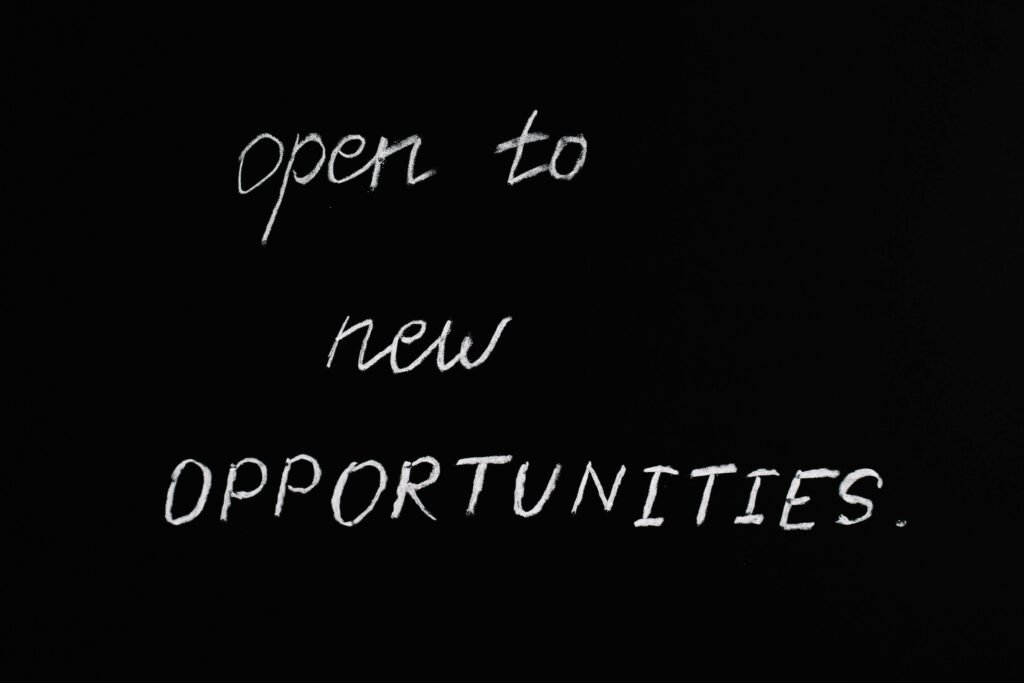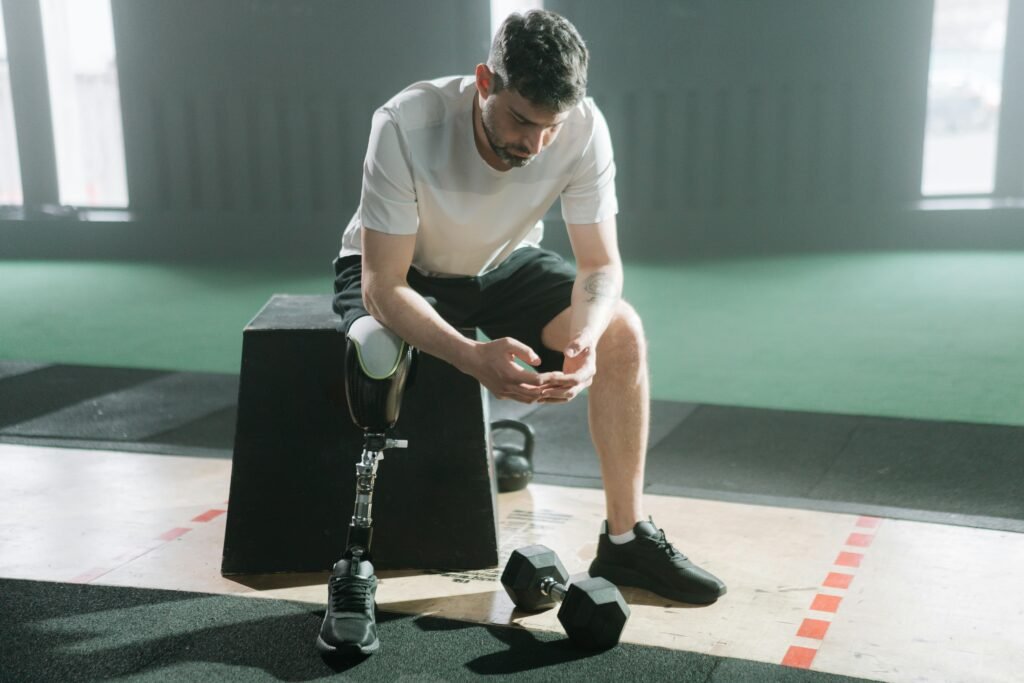
Introduction to Changing Your Reality
In life, we often find ourselves at crossroads, pondering whether we should change our reality.
It can be daunting to think about altering our path, but real-life examples show that it is possible to transform your life by changing your mindset and approach.
This blog will explore various facets of changing your reality, offering inspiring stories and practical steps for making meaningful shifts in your personal, professional, and social life.
Changing your reality is about making deliberate choices that align with your goals and values.
It’s not just about wishful thinking; it requires concrete actions and sustained effort.
For instance, consider someone who decides to improve their health.
They might start by making small changes to their diet and gradually incorporate regular exercise into their routine.
Over time, these small steps lead to significant health improvements, demonstrating that consistent, intentional actions can transform your reality.
Similarly, people often change their reality by altering their thought patterns.
Cognitive Behavioral Therapy (CBT) is a powerful tool that helps individuals reframe negative thoughts and develop a more positive outlook.
By challenging and changing unhelpful beliefs, people can significantly improve their mental well-being and overall quality of life.
This shift in mindset can lead to new opportunities and a more fulfilling existence.
Another example is found in the world of education.
Individuals who pursue lifelong learning often find that their reality changes as they acquire new skills and knowledge.
Whether it’s taking a course in a new field, learning a language, or mastering a new hobby, education can open doors to new career paths and personal growth.
By investing in their education, people can create new realities that align with their aspirations and interests.
Relationships also play a crucial role in changing your reality.
Surrounding yourself with supportive and like-minded individuals can have a profound impact on your life.
Positive relationships can provide encouragement, motivation, and new perspectives that inspire you to reach your goals.
Conversely, distancing yourself from toxic relationships can create space for healthier interactions and personal growth.
Financial changes can also transform your reality.
By adopting smart financial habits, such as budgeting, saving, and investing, individuals can achieve greater financial stability and independence.
This financial freedom allows for more choices and opportunities, ultimately leading to a more satisfying and secure life.
Moreover, changing your environment can have a significant impact on your reality.
This could mean moving to a new city, redecorating your home, or even spending more time in nature.
A change in environment can refresh your perspective and provide new experiences that enrich your life.
Finally, community involvement can lead to a transformed reality.
Engaging in volunteer work, participating in local events, or joining community groups can foster a sense of belonging and purpose.
These activities not only benefit others but also enrich your own life, creating a more connected and fulfilling reality.
By exploring these real-life examples and applying the strategies discussed, you can begin the journey of changing your reality, embracing new possibilities, and creating a life that aligns with your values and aspirations.
Personal Growth and Transformation

Personal growth is a journey, and many have transformed their lives by aligning their actions with their core values.
For instance, consider individuals who have overcome hardships by focusing on personal development.
One effective strategy is recognizing that identity and subjective value are closely connected, making behaviors more valuable when tied to one’s core values and sense of self.
While broad improvements in executive function through interventions may lack strong evidence, specific skills relevant to a goal can improve with practice.
People often use this knowledge to focus on skill-building aligned with their goals, leading to substantial personal growth.
Transforming one’s life often involves taking proactive steps to develop skills and habits that are aligned with personal values.
This might include setting aside time for self-reflection and identifying areas for improvement.
Engaging in activities such as journaling or seeking feedback from trusted individuals can provide valuable insights into one’s strengths and weaknesses, helping to guide the growth process.
Another crucial aspect of personal growth is setting achievable goals and creating a plan to reach them.
Breaking down larger goals into smaller, manageable steps can make the process less overwhelming and more attainable.
This approach allows individuals to track their progress and celebrate small victories along the way, which can boost motivation and encourage continued effort.
Developing resilience is also key to personal growth.
Resilience involves the ability to bounce back from setbacks and adapt to challenges.
Building resilience can be achieved through practices such as maintaining a positive outlook, seeking support from others, and learning from past experiences.
By developing resilience, individuals can navigate obstacles more effectively and continue moving forward on their personal growth journey.
Another important factor in personal growth is self-compassion.
Treating oneself with kindness and understanding, especially during difficult times, can foster a healthier mindset and improve overall well-being.
Self-compassion involves recognizing that everyone makes mistakes and experiences setbacks, and it encourages individuals to treat themselves with the same kindness they would offer to a friend in a similar situation.
Additionally, cultivating a growth mindset, as opposed to a fixed mindset, can significantly impact personal development.
A growth mindset embraces challenges and views failures as opportunities for learning and improvement.
This perspective encourages individuals to persevere in the face of difficulties and to see their abilities as adaptable and capable of growth.
By focusing on these strategies and maintaining a commitment to personal development, individuals can achieve meaningful and lasting transformations in their lives.
Career Changes Leading to New Realities

Changing careers can be a powerful way to create a new reality.
Many individuals have found new paths by stepping out of their comfort zones and pursuing different fields.
This often requires a significant shift in mindset and the willingness to embrace new challenges.
One important aspect to consider when contemplating a career change is assessing your current skills and identifying transferable ones.
For instance, someone in marketing might find that their skills in communication, strategy, and analysis are equally valuable in a different sector like education or healthcare.
This conscious effort to reframe and repurpose existing skills can make the transition smoother and less intimidating.
Researching new fields is another crucial step.
By understanding the requirements and expectations of a different industry, you can better prepare yourself for the shift.
Networking with professionals already working in those fields can provide valuable insights and open doors to new opportunities.
Informational interviews, industry conferences, and online professional groups can be excellent resources for building these connections.
The conscious effort required for such transitions often engages one’s executive function, which operates in the service of novel goals rather than routine tasks.
This conscious engagement is essential when navigating new career paths.
Additionally, it’s beneficial to gain new qualifications or certifications that align with your desired career path.
Whether it’s taking an online course, attending workshops, or obtaining a formal degree, these educational pursuits can bolster your resume and enhance your credibility in a new field.
Consider the story of someone who transitioned from a corporate job to a role in the nonprofit sector.
Initially, they might have faced doubts about their ability to succeed in a vastly different environment.
However, by leveraging their project management skills and gaining knowledge about nonprofit operations, they successfully made the switch.
This not only led to a more fulfilling career but also allowed them to make a meaningful impact in their community.
Another example is individuals who switch from technical roles to creative professions.
An engineer might find a new passion in graphic design or writing.
This shift often requires not only learning new skills but also adopting a different mindset focused on creativity and innovation.
Taking small, incremental steps can also facilitate a career change.
This might involve starting with freelance or part-time work in the new field before making a full transition.
These smaller commitments can provide valuable experience and reduce the risks associated with a complete career overhaul.
By focusing on these strategies and maintaining a commitment to personal development, individuals can achieve meaningful and lasting transformations in their professional lives, finding success and fulfillment in new career realities.
Overcoming Challenges to Change Reality

Overcoming challenges while trying to change your reality often leads to remarkable personal transformations.
One key to navigating these challenges is understanding the limitations of executive function.
During tough times, it’s crucial to remember that executive function has limited bandwidth, meaning only a small amount of information can be consciously processed at a time.
This understanding can help you focus on the most critical tasks and prevent feeling overwhelmed.
Additionally, choosing to engage in behaviors autonomously is essential for maintaining motivation.
When individuals opt to take actions based on their own volition, it can sustain their drive, even when facing negative feedback.
Employing this technique can keep your spirits high and your motivation intact as you work towards your goals.
Facing obstacles often requires resilience and adaptability.
Building resilience involves adopting strategies that help you bounce back from setbacks and adapt to new circumstances.
Practices such as maintaining a positive outlook, seeking support from friends and family, and learning from past experiences can all contribute to developing a resilient mindset.
This resilience will allow you to navigate difficulties more effectively and continue striving towards changing your reality.
Moreover, breaking down large goals into smaller, manageable tasks can make the process of overcoming challenges less daunting.
By focusing on one step at a time, you can gradually make progress without feeling overwhelmed.
This approach not only makes the journey more manageable but also allows you to celebrate small victories along the way, boosting your confidence and motivation.
Another crucial aspect of overcoming challenges is learning to manage stress.
Techniques such as mindfulness, meditation, and exercise can help reduce stress levels and improve overall well-being.
By incorporating these practices into your daily routine, you can enhance your ability to cope with difficulties and maintain a clear, focused mind.
It’s also important to recognize and challenge any negative thought patterns that may arise during difficult times.
Cognitive Behavioral Therapy (CBT) techniques can be particularly useful in identifying and reframing unhelpful thoughts, allowing you to adopt a more positive and constructive mindset.
This shift in thinking can significantly impact your ability to overcome challenges and continue working towards your goals.
Community and Social Impact

Communities can collectively change their reality through collaborative efforts and social initiatives.
Neighborhoods that have come together to create community gardens, for example, demonstrate the power of local action in transforming shared spaces.
These gardens not only provide fresh produce but also foster a sense of belonging and shared purpose among residents.
By working together, individuals can turn neglected plots of land into vibrant, productive areas that benefit everyone involved.
Another example of community-driven change is the rise of local businesses that prioritize sustainable practices.
These businesses often serve as hubs for eco-friendly products and services, inspiring others in the community to adopt more sustainable lifestyles.
By supporting such businesses, community members contribute to a larger movement toward environmental responsibility, showing that collective action can lead to significant, positive change.
Social initiatives aimed at improving public health are another way communities can change their reality.
Programs that offer free or low-cost health screenings, fitness classes, and nutrition workshops can have a profound impact on community well-being.
These initiatives not only address immediate health concerns but also educate residents on how to maintain a healthier lifestyle long-term.
The collective effort to promote wellness can lead to a healthier, more vibrant community.
Public art projects are yet another example of how communities can come together to create a positive impact.
Murals, sculptures, and other forms of public art can transform drab, uninspiring spaces into areas that spark joy and creativity.
These projects often involve local artists and residents, fostering a sense of pride and ownership in the community.
The visual transformation of a neighborhood can uplift spirits and inspire further community involvement.
Community clean-up events are also powerful tools for change.
When residents band together to pick up litter, plant trees, or restore local parks, they not only improve their environment but also build stronger social ties.
These events provide opportunities for people to meet their neighbors, collaborate on meaningful projects, and take pride in their community.
The physical act of cleaning and beautifying shared spaces can lead to a greater sense of responsibility and stewardship among residents.
Educational programs that focus on community history and culture can also contribute to a collective change in reality.
By learning about their shared past and cultural heritage, residents can develop a deeper connection to their community.
This sense of connection can foster civic engagement and motivate individuals to work together to address local issues.
By participating in these various community initiatives, individuals can play an active role in shaping a more positive, cohesive, and thriving environment.
The power of collective action proves that when people come together with a shared vision, they can create lasting change that benefits everyone.
Mindfulness and Conscious Living

Mindfulness practices encourage a more intentional way of living, which can fundamentally change your reality.
Techniques such as meditation, mindful breathing, and conscious decision-making help cultivate awareness and intentionality in daily life.
By understanding the mental demands of tasks, you can better manage your focus and energy.
Engaging with mindfulness practices can enhance this motivational process, leading to a more conscious and fulfilling existence.
Mindfulness encourages a heightened state of awareness that can transform daily experiences.
For example, starting your day with a brief meditation can set a positive tone and improve focus.
Mindful breathing exercises can help reduce stress and increase mental clarity, making it easier to tackle tasks efficiently.
Conscious decision-making is another powerful aspect of mindful living.
By taking the time to reflect on your choices and their alignment with your values, you can make more intentional decisions that enhance your well-being.
For instance, opting for a walk in nature over scrolling through social media can provide mental rejuvenation and a deeper sense of connection to your surroundings.
Mindfulness also promotes emotional regulation, enabling you to respond thoughtfully rather than react impulsively to challenging situations.
This emotional balance can lead to healthier relationships and improved interactions with others.
Incorporating mindfulness into your routine doesn’t have to be time-consuming.
Simple practices like mindful eating, where you pay full attention to the flavors and textures of your food, can make everyday activities more enriching and satisfying.
By integrating these mindfulness practices into your life, you can create a more intentional, balanced, and fulfilling reality.
This conscious approach to living helps you stay aligned with your values and goals, fostering a deeper sense of purpose and contentment.
